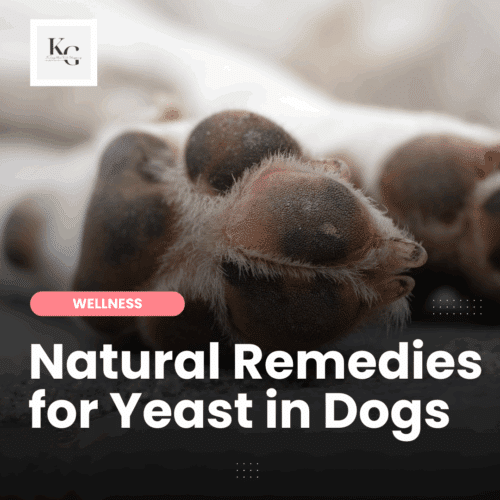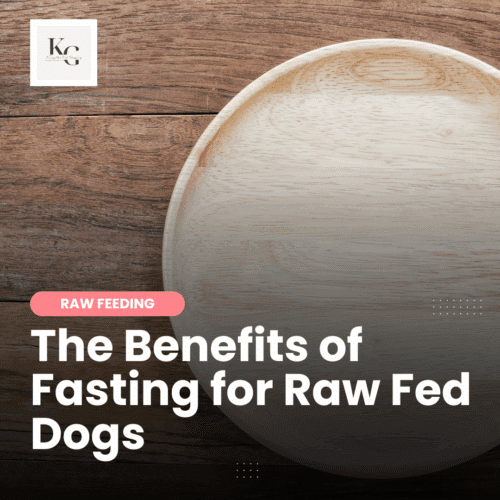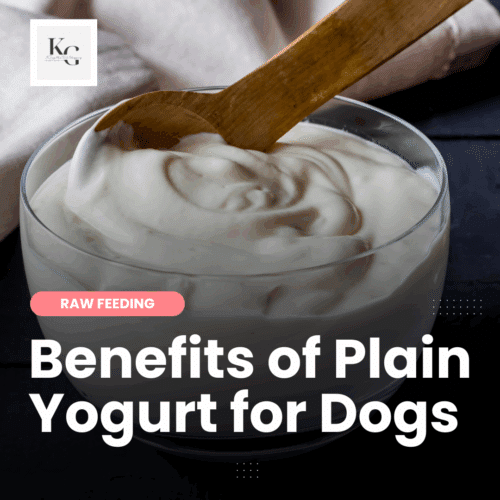Keep the Tail Wagging is supported by pet parents. I occasionally earn a commission (at no additional cost to you) when you click through an affiliate link to one of my favorite products. Thank you for your support. Read More
“My cat got stomach cancer from eating red and yellow dyes in 9 lives. Poor thing. I assumed it was safe.” ~ Facebook User
I see stories like this on social media all the time. Pet parents are learning the dangers of the ingredients used in commercial pet food and treats the hard way.
Kibble Destroyed My Dog's Gut
Three years.
I fed Rodrigo a kibble diet for three years until I finally accepted that kibble was the reason for all of his health issues – allergies, chronic ear infections, itchy paws, and daily loose stool/diarrhea. I didn't know. The veterinarian told me that the food I was feeding my dog was healthy. Many veterinarians told me that “chicken allergies” weren't real; it was just something people were saying to demonize kibble. And I put my dog through many rounds of antibiotics not understanding that I was just making his health issues worse, not better.
Why Kibble is Bad for My Dogs
I switched my dog to raw before fully understanding why he couldn't eat kibble. Today, nearly four years later, I clearly understand why the food I chose for my dog didn't work. Below are the ingredients in one of the foods I fed to Rodrigo:
Chicken, Chicken Meal (source of Glucosamine and Chondroitin Sulfate), Brewers Rice, Rice Bran, Whole Brown Rice, Split Peas, Whole Grain Oatmeal, Natural Flavor, Chicken Fat (preserved with mixed Tocopherols), Sunflower Oil (preserved with mixed Tocopherols), Soybean Oil (preserved with mixed Tocopherols), Dried Plain Beet Pulp, Pea Protein, Fish Oil (preserved with mixed Tocopherols), Potassium Chloride, Choline Chloride, DL-Methionine, Salt, Zinc Sulfate, Niacin Supplement, Vitamin E Supplement, Calcium Pantothenate, Riboflavin Supplement (Vitamin B2), Pyridoxine Hydrochloride (Vitamin B6), Vitamin B12 Supplement, Iron Amino Acid Chelate, Copper Amino Acid Chelate, Selenium Yeast, Biotin, Manganese Amino Acid Chelate, Vitamin A Supplement, Thiamine Mononitrate (Vitamin B1), Vitamin D3 Supplement, Potassium Iodide, Folic Acid, Rosemary Extract, Decaffeinated Green Tea Extract, Spearmint Extract
Ingredients in a dry dog food I used to feed my dogs.
I bought this food because the package showed a whole chicken and vegetables; the first two ingredients are chicken. This is what I know now…
- A whole chicken is the first ingredient; the reason why it's first is that water is heavy. This ingredients list is misleading – there isn't a ton of chicken in this food, but there's a ton of water in this food.
- The chicken meal would be an excellent ingredient because since it's listed as second, there is a lot of chicken (without water) in the meat. However, since the chicken meal is a source of glucosamine and chondroitin, I am left to wonder if this chicken meal is made from chicken by-products (chicken necks are a source of glucosamine and chondroitin), not a whole chicken.
- This food is grain heavy: Brewer's Rice, Rice Bran, Whole Brown Rice, Whole Grain Oatmeal; dogs don't need grains in their diet. They can be tough on a dog's digestive system, especially if a dog has GI issues.
- Chicken fat means the food will go fast quicker (2 weeks); once a bag is opened, the fat will begin to oxidize. I used to pour my dogs' kibble into a new container, making it go bad even faster.
- Soybean oil tends to come from genetically modified crops. Soybeans are linked to GI issues in dogs, seizures, and other health issues.
- Dried plain beet pulp is added for fiber, but many think this ingredient is just a filler. And some breeds can't consume foods with dried beet pulp, like Great Pyrenees.
- Pea protein is added to beef up the protein content because the food cheats dogs of protein in the earlier ingredients by adding whole chicken (with water), falsely giving you the impression that this is a high-protein food.
- The fish oil in this food isn't enough for dogs to get the benefits of fish oil, and, like with the chicken fat, once the food is opened, the fat will begin to oxidize, and the food will go bad faster (in a couple of weeks).
- This food is using synthetic vitamins, which are harder to digest. Although AAFCO standards may balance the food, an ingredient that can't be digested easily and therefore absorbed isn't giving our dogs the vitamins they need.
I learned all this by taking the Pet Food Nutrition certification course offered by Dogs Naturally Magazine. Although I've been doing research for years, what I learned in this course over a few weeks taught me what I could share in this post today.
Why You Should Take a Course
The Pet Food Nutrition Specialist certification is impressive. Dana Scott and Meg Smart put together a thorough program full of fantastic information that made me a more thoughtful and informed pet parent.
Here are a few reasons to take the Dogs Naturally Magazine course about pet food.
- You will understand the pet food industry and the roles of AAFCO, FDA, and other organizations. Many people are involved in the pet food industry, and not all are in the game to protect our pets. The AAFCO statement on bags of dog food doesn't hold weight for me anymore.
- You will understand what goes into pet food; from the grocery store to the “quality” pet food brands. A fellow pet blogger once told me that there is no such thing as quality cat food. I understand now what she means; cats shouldn't eat a diet of kibble. After taking this course, I now see that quality dog food isn't always quality.
- If you have a dog (or cat) that struggles with commercial pet food, you'll now understand why. Rodrigo lived with GI issues on a kibble diet for years, and I couldn't understand why the food didn't work for him. Now I have a better understanding of the problem and no longer blame myself for his health issues.
- You will be able to make better nutrition choices for your pet (this is for dogs and cats). My dogs are raw fed, but last year, I transitioned my cat from kibble to canned and freeze-dried raw; I now understand why this is a superior diet.
- You will be able to educate your friends on pet food, speaking intelligently about ingredients and processes. I'm not the type of lecture friends about what they feed their dogs, but I love answering questions when they approach me. Gaining my certification has helped me intelligently show them why commercial dog and cat food may not work for their pet. I no longer come across as a crazy raw feeder who hates kibble.
- This certification will give you more credibility if you're a pet blogger or work in a pet store. I saved the certificate to my site (in the sidebar) and changed my email signature to reflect that I'm certified as a Pet Food Nutrition Specialist. The difference was immediate. People take me more seriously.
- You'll be glad that you feed raw or home cooked; or ready to make the switch. As I went through each module, I was thankful that I switched to raw when I did, and I'm looking forward to the raw feeding certification. The pet food industry is like the Wild Wild West, and the Sheriff is crooked. With recent stories of pentobarbital found in pet food and the recent news that a well-known pet food brand was calling their canned food beef when, in actuality, it was euthanized horse meat, I am beginning to wonder, “who can we trust?”
Although I earned my certification, I'm not a certified nutritionist or certified raw meal formulator. That is NOT what this course teaches us, and if you live in the United States, you cannot become a certified animal nutritionist unless you first attend veterinarian school. However, this course did push me to want to continue educating myself about my dogs' nutritional needs.
Thanks to this certification course by Dogs Naturally Magazine, I have a clear understanding of what goes into pet food, which helps me explain why a food isn't good rather than saying “because it's crap,” which, surprisingly, isn't that compelling or convincing for many people. The course was fun to take, my brain was bursting with information, and I'm thankful that I'm in a position to be able to make my dogs' food.








Thank you so much for this review. What’s not to love about DNM and Dana.
To be clear, this review IS NOT for the “Raw Food Nutrition Specialist Certification”. Is this correct?
Your review is for a DIFFERENT class. Is this correct?
Your review clearly states the class you took informs folks about the details of kibble and DOES NOT discuss the finer details of raw, fresh, whole foods.
I have been considering the DNM course on raw feeding nutrition but if it only covers the awfulness of kibble, I would rather save my money.
I just want to be sure the course I am interested in purchasing is NOT the same class you are reviewing here.
Thanks so much!
So what exactly is your point? I took a course and received a certificate. I found it educational and I learned a lot. I didn’t take the certificate and start charging people consultation fees to formulate meals because that’s not what the course is about. Have you taken any of the DNM courses? They’re very informative.
You say you’re certified. But you’re “certified” by a MAGAZINE. Come on!
I love when someone is schooled on their “feelings” with facts.
Thank you Kimberly for standing up to the trolls.
We’ll have to agree to disagree. I believe that animals should be fed a species appropriate diet; I wouldn’t eat what my dogs eat, because I’m not a dog and their diet isn’t species appropriate for me. We can go back and forth again and again, but I have no interest in trying to convince you that what I feed my dogs is right for my dogs. Nor am I interested in trying to convince you to give raw a try.
I wish you all the best with your pets.
Agree that fresh food (but not raw) is a good basis for a diet.
I also agree that there are increases in cases seen of cancer, diabetes, pancreatitis, allergies, food intolerances, digestive issues – but unsure how you have related this to food!
Surely a more plausible explanation for the increase in cases of the above diseases are:
– longer lifespans of pets (cancer and diabetes are diseases of old age)
– better research into diseases to allow diagnosis
– better diagnosis tools available in veterinary medicine: endoscopy to biopsy and diagnose inflammatory bowel disease, sensitivity testing for allergies, blood testing and ultrasound for pancreatitis??
– willingness of pet owners to investigate further into conditions
My point about wolves was that often owners are misguided into thinking that the lifestyle of “wild ancestors” must be correct and I would disagree with that way of thinking.
Anecdotally, (since we are discussing in terms of anecdotes) I know of quite a few 15 year old dogs fed purely on commercial kibble or commercial tinned food, who act like puppies and are ‘thriving’ as well, but I would not jump to the conclusion that the kibble is the only reason that they have had long lives.
I wouldn’t give my pets anything to eat that I wouldn’t be happy eating myself. Therefore, I also do not feed them raw bits of animal carcasses as I know that this is a health and safety hazard (for both the pet, owners handling the raw flesh, and for anyone who comes across the environment in which pets subsequently poop (even if poop is picked up – think Salmonella or Campylobacter!!)) …. an unnecessary risk for owners who are just wishing to feeding a good diet.
Please note, there are MANY cheap commercial pet foods that I do not agree with at all. However, there ARE some excellent quality commercial foods available, which provide balanced nutrition, easily digestible energy, and do not come with the stomach-churning risk of feeding raw.
And do you believe that wolves have a shorter lifespan because of their diet? That doesn’t make a lot of sense to me. My dogs aren’t wolves; they’re domesticated pets. But if I’m going to do a comparison, it’ll be to wolves in captivity, which live up to 17 years (www.pbs.org/wnet/nature/river-of-no-return-gray-wolf-fact-sheet/7659/). I’ve been feeding raw for 5 years without an issue. My dogs are thriving, not just surviving. I personally believe that feeding kibble isn’t safe – it’s like me eating fast food day in and day out. Our dogs are developing health issues in record numbers – cancer, diabetes, pancreatitis, allergies, food intolerances, digestive issues, and more. This is not a coincidence; I believe that this is due to a highly processed diet. Dogs fed a diet of fresh food are living longer because they are being fed a diet that is species appropriate.
While my “evidence” is purely anecdotal, I’ve seen the proof in my four dogs and cat and I’m going to stick with feeding them a species appropriate diet because I want them to live as long as those wolves I mentioned.
I’d be interested to know how dogs’ saliva is anti-bacterial (and by a property that humans do not possess) ?
Regarding comparative acidity of guts:
Even humans have an acidic stomach pH.
There has been no large scale study as to the standard pH of canine stomachs.
Regardless, discussing stomach acidity is pointless – it is not the issue of killing bacteria in the food (which both human and dog stomachs are acidic enough to kill), but the bacterial toxins that may present in the food (which have been created happily by bacteria while the bacteria-containing raw diet has been processed in a plant, packaged, transported to the store, offloaded, kept in the store, transported back home, kept at home…..) that will cause severe illness or gastrointestinal signs.
Humans do sometimes eat raw food – sashimi, sushi, steak tartare, for example. HOWEVER, the cuts of meat used in these dishes are very fresh, often the finest cuts, and are not processed (minced, chopped, packaged etc.) in the same way and stored for the durations that raw dog diets are.
It is not impossible to feed raw food diets, BUT for this reason, raw diets for dogs can never be considered safe!
Many people are obsessed with feeding their dogs “like their wild wolf ancestors” were fed…. but keep in mind, that wild wolves have a life expectancy of around 6-8 years…. far shorter than our beloved domesticated pooches, who live up to even 16-17 years old!
Just my 2 cents… 🙂
Dogs are biologically equipped to eat a diet of raw meat and that includes handling the bacteria in raw meat. Dogs have properties in their saliva that kill bacteria, their gut is acidic creating an unhappy environment for bacteria, and their digestive system absorbs nutrients, processes food, and eliminates waste efficiently. A homecooked diet is beneficial as well. The point, really, is to add more fresh food to a dog’s diet to offset commercial dry pet food.
All meats are mostly water — they are muscles & just like our muscles they are mostly (75%) water in their natural state. We and all animals have about 65-70% of our body weight from water. Beef is the muscle of cows, pork is the muscle of pigs.
Do you eat whole chicken muscle raw, with its water still included? Or do you cook it to kill any bacteria and eat partially dry chicken? You know, some of the water escapes as steam when it is cooked. Perhaps you eat completely dehydrated/dried chicken meat. Chicken meal is the other parts of the chicken, including bones.
Raw meats & food still contain all the germs in them, & possibly some from the intestines (that’s why it is always recommended to fully cook hamburger, meat & chicken, etc. before eating it). Some germs even survive freezing, which is why it is still recommended to fully cook them.
What a good read! Thank you so much for sharing, very informative. Keep up the awesome posts 🙂
Take care,
Henry
What a good read! Thank you so much for sharing, very informative. Keep up the awesome posts 🙂
Such a great post! It really is very important to know what we should feed our dogs/cats and how it affects them. Thanks for sharing this!